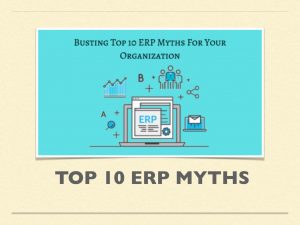ERP disasters you hear about in the news are primarily the result of not including the correct individuals in the selection and implementation processes.
People, procedures, and technology are the three pillars of a successful ERP Software installation. All three of these items must be thoroughly considered and prepared for. If you miss one, you’ll be included in the following ERP catastrophes article in the major news outlets.
However, the people aspect is less forgiving than the other two parts
You can address difficulties early in the selection and ERP Implementation phase with the proper personnel and avert tragedy.
Why People Are Critical To ERP Success?
Enterprise Resource Planning System mishaps nearly always result from a lack of preparedness and planning — and humans are to blame. Suppose you don’t have the proper people doing the right things to prepare and plan for ERP installation. In that case, you’re creating a disaster waiting to happen.
This personnel issue is frequently caused by a lack of ability and competencies among your people. You and your staff may not know ERP well enough because it isn’t something you do every day. It takes much work to stay on top of ERP solution offerings and their numerous life cycles.
Similarly, relying on your current IT vendors for ERP knowledge isn’t always brilliant. ERP is a distinct skill set, even in IT services. Furthermore, arranging employees so that everyone pulls in the same direction from the start is no easy task — and this is also mission-critical for a successful ERP deployment.
Hershey’s Not-So-Sweet ERP Disasters
Hershey’s Chocolate’s ERP deployment disaster in 1999 was perhaps the most well-known. Due to the impending Y2K crisis, the corporation raced to complete its ERP deployment in 30 months rather than the recommended 48 months. Hershey’s was committed to installing its ERP Software Services by the beginning of 2020, and the results were spectacular.
The company’s many divisions were at odds with one another after attempting to install three resource planning technologies simultaneously, resulting in failed system testing, data migration, and training. The issues were so severe that Hershey’s could not fulfill an estimated $100 million in orders, despite having the goods in stock. Hershey’s stock plunged an astounding 8% due to the error, which hit the front page of the Wall Street Journal.
Although Y2K is a distant memory, Hershey’s Enterprise Resource Planning installation failure exemplifies how a well-planned ERP deployment procedure may prevent organizations from overloading their present systems by attempting too much at once.
Put the needs of your people first with Connected IT Consulting!
A successful ERP installation project entails more than simply selecting the correct technology solution; it also entails ensuring that the proper people are involved. The ERP team should cover all the roles and responsibilities related to your ERP implementation, from project managers and business analysts to IT managers and users and subject matter experts.
With the appropriate personnel in place, you can cope with inherent difficulties proactively and avoid finding up in an ERP disasters experiences post like this one.
So, how do you determine whom you need in what roles? Begin by speaking with an ERP Consulting professional at Connected IT Consulting.



